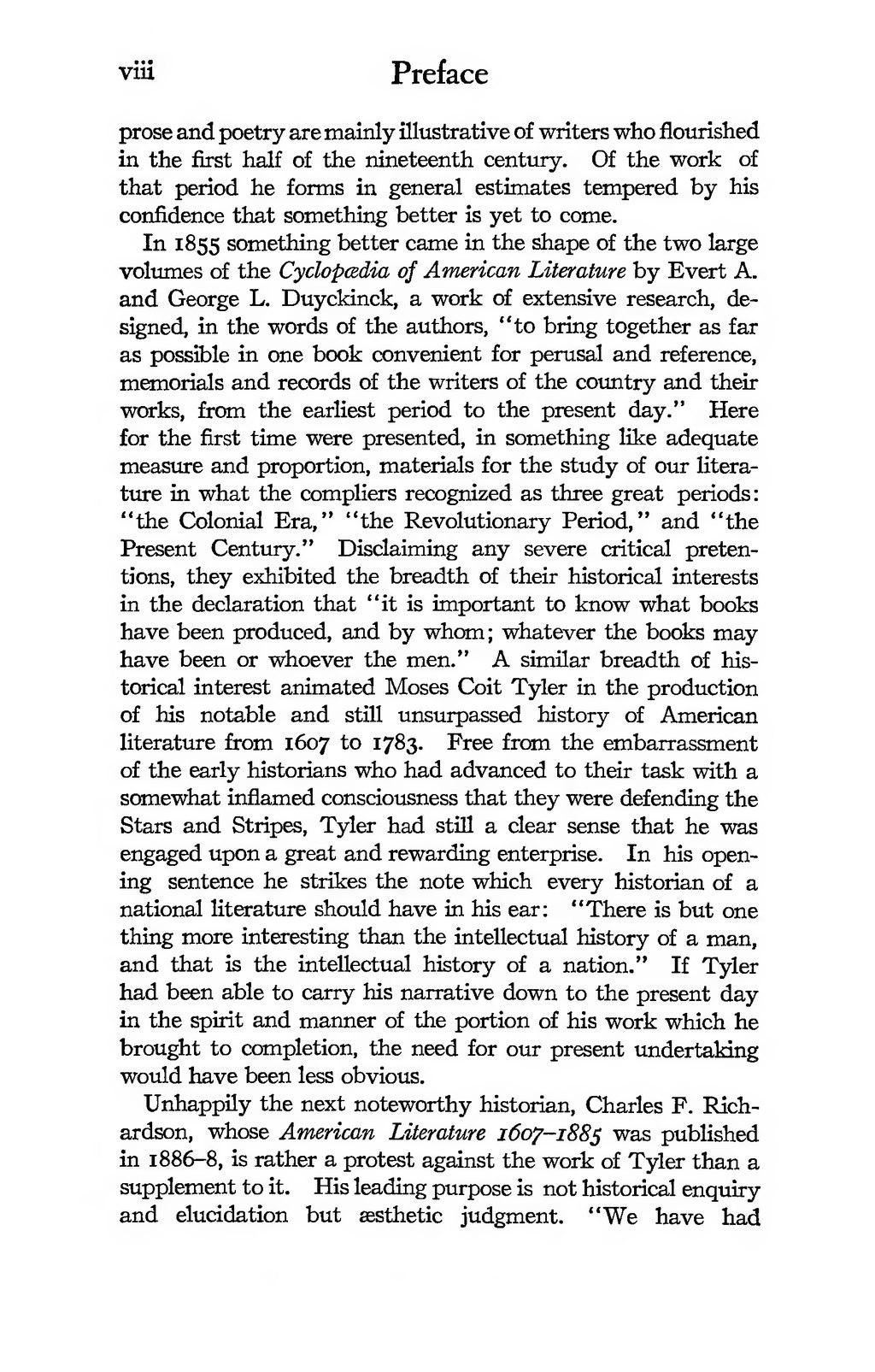prose and poetry are mainly illustrative of writers who flourished in the first half of the nineteenth century. Of the work of that period he forms in general estimates tempered by his confidence that something better is yet to come.
In 1855 something better came in the shape of the two large volumes of the Cyclopædia of American Literature by Evert A. and George L. Duyckinck, a work of extensive research, designed, in the words of the authors, “to bring together as far as possible in one book convenient for perusal and reference, memorials and records of the writers of the country and their works, from the earliest period to the present day.” Here for the first time were presented, in something like adequate measure and proportion, materials for the study of our literature in what the compilers recognized as three great periods: “the Colonial Era,” “the Revolutionary Period,” and “the Present Century.” Disclaiming any severe critical pretentions, they exhibited the breadth of their historical interests in the declaration that “it is important to know what books have been produced, and by whom; whatever the books may have been or whoever the men.” A similar breadth of historical interest animated Moses Coit Tyler in the production of his notable and still unsurpassed history of American literature from 1607 to 1783. Free from the embarrassment of the early historians who had advanced to their task with a somewhat inflamed consciousness that they were defending the Stars and Stripes, Tyler had still a clear sense that he was engaged upon a great and rewarding enterprise. In his opening sentence he strikes the note which every historian of a national literature should have in his ear: “There is but one thing more interesting than the intellectual history of a man, and that is the intellectual history of a nation.” If Tyler had been able to carry his narrative down to the present day in the spirit and manner of the portion of his work which he brought to completion, the need for our present undertaking would have been less obvious.
Unhappily the next noteworthy historian, Charles F. Richardson, whose American Literature 1607-1885 was published in 1886-8, is rather a protest against the work of Tyler than a supplement to it. His leading purpose is not historical enquiry and elucidation but æsthetic judgment. “We have had
